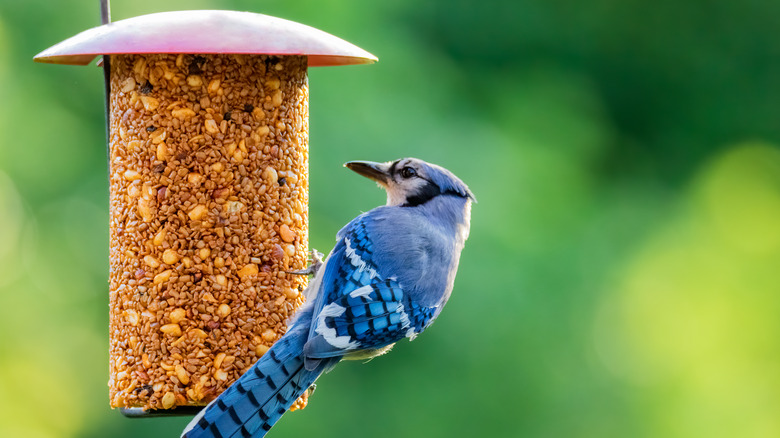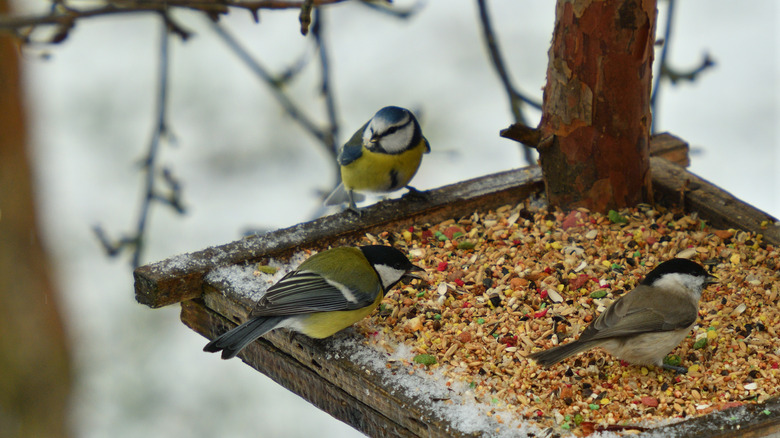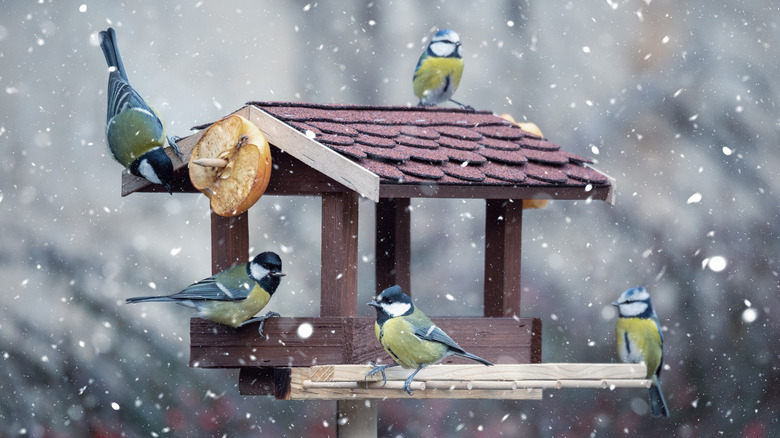How To Protect Your Bird Feeder From Wind
Bird feeders are a wonderful addition to your yard, allowing for endless hours of enjoyment watching birds. They are particularly important for birds in winter, providing a reliable source of food. But some feeders are more susceptible than others to dramatic weather conditions. High winds can not only make it tricky for birds to access your feeder, but can also damage it. There are a few tricks for choosing the right feeder for your yard and protecting it from windy weather.
There are several factors involved in your bird feeder's vulnerability to wind. Its size and weight, as well as the materials it's made from, can determine if it is more likely to be affected by strong gusts. The placement and location can also make a huge difference in whether it's affected by windy weather. Finally, the way your feeder is secured (or not) will affect its sturdiness in the face of intense winds.
If you've lost a feeder or had one break due to extreme weather, you want to find a way to prevent such an inconvenience again and avoid interrupting the birds' feeding schedule. Here are some tips to help you keep your feeder in tip-top shape for feeding the birds all year 'round.
Why some feeders are more affected by windy weather than others
What's your feeder made from? Some feeders are definitely heavier than others, and that weight can help keep the feeder from swaying or falling in high winds. A wooden feeder often has a rustic look and is generally heavy enough to withstand strong gusts. Most wooden bird feeders are unpainted, and over time they can suffer from water damage and rotting wood, but they are a great choice for a sturdy feeder. They can be mounted to a wooden post or tree for extra security.
Many bird feeders are made of metal, sometimes with glass or plastic tubes or windows. Tube feeders are often recommended for finches. This type of feeder is generally easy to clean, often lightweight, and usually includes a hook or wire for hanging. If choosing one of these feeders, opt for a large, sturdy one with some weight. You can also build your own bird feeders from recycled materials like milk jugs or wine bottles.
There are also plastic bird feeders, and these are usually the lightest. While they are often inexpensive and easy to clean (pluses for many people), they can also be somewhat flimsy, and may be more likely to be knocked loose or damaged on a very windy day. If choosing one of these feeders, location will be an important factor to make sure it's not exposed to wind.
Protecting your feeder from wind
In addition to the materials your bird feeder is made from, the location, placement and overall design can affect its ability to stand up to windy weather. The most sturdy option is a feeder mounted on a wooden or metal post. If your bird feeder is made of wood, you can attach it to a wood post with some nails or hefty staples. You may be able to secure a birdhouse-style feeder to a metal post with wire. Be sure to tuck the wire edges in securely to prevent getting cut or scratched.
Placing your feeder in a spot that is sheltered from wind is another good option. You can install it in a corner area protected on two sides from wind, or next to your house or garage to give it some protection.
Many birds like to have some cover for protection around a feeder. Cardinals and goldfinches, for example, want to feel safe from predators due to their bright colors. Locating your feeder in or near some shrubs or trees also provides protection from wind, so this is a good option if you have songbirds that like a bit of vegetation nearby. Evergreens provide this protection year round, as do thickly-branched hedges or shrubs like privet, boxwood, forsythia, or Rose of Sharon. Creating a feeding area safe from wind and predators will allow you to attract a greater variety of birds.


